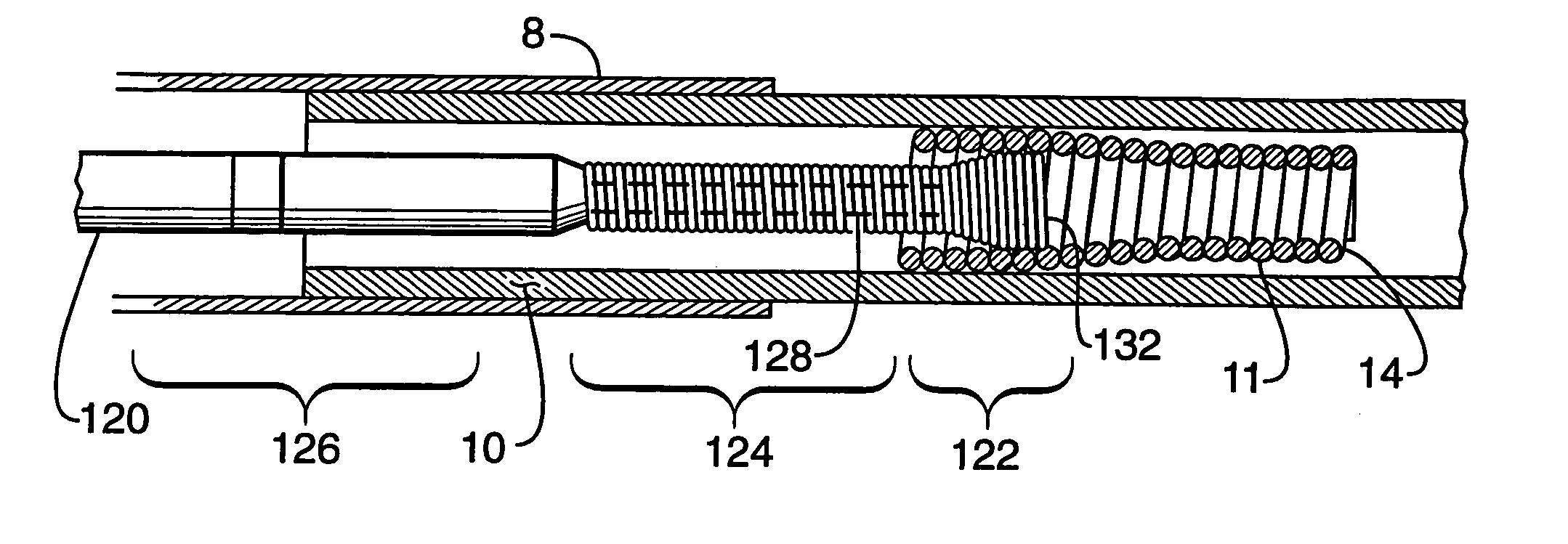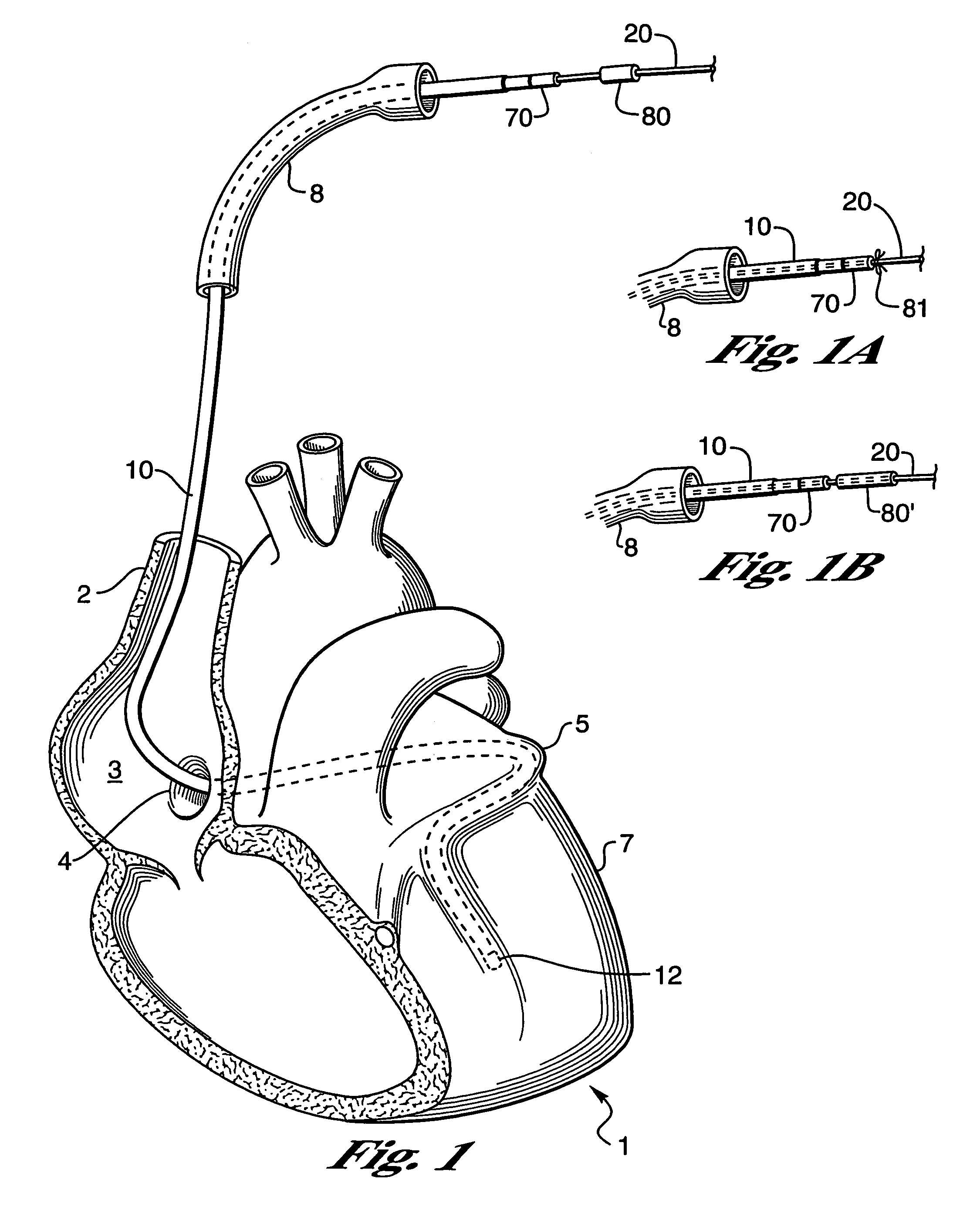Modified guidewire for left ventricular access lead
a technology of guidewires and lead electrodes, which is applied in the field of implantation and placement of cardiac leads, can solve the problems of not being able to advance further into the vascular system using standard techniques and equipment, not being able to achieve the optimal position of the lead electrode, and reducing friction. , the effect of reducing the risk
- Summary
- Abstract
- Description
- Claims
- Application Information
AI Technical Summary
Benefits of technology
Problems solved by technology
Method used
Image
Examples
Embodiment Construction
[0031]FIG. 1 shows a human heart 1 with a coronary lead 10 passing through the superior vena cava 2, the right atrium 3, and the coronary sinus 4 into the great vein 5 of the heart 1 so that an electrode 12 on the lead 10 is properly positioned in a branch of the coronary vein on the left sides of the heart. When positioned as shown, the electrode 12 can be used to either sense the electrical activity of the heart or to apply stimulating pulses to the left ventricle 7 without the electrode being positioned within the left ventricular chamber. A portion of a guide catheter 8 is used to insert the lead into the heart 1. The present invention is concerned with guidewires and / or finishing wires useful for placing leads 10 and their electrodes in the vasculature and for removing the associated guide catheter 8 and a guidewire 20 without dislodging the leads 10 and its electrode(s) 12. As used herein, the term “guidewires” includes both the guidewires used to install the leads and “finish...
PUM
 Login to View More
Login to View More Abstract
Description
Claims
Application Information
 Login to View More
Login to View More - R&D
- Intellectual Property
- Life Sciences
- Materials
- Tech Scout
- Unparalleled Data Quality
- Higher Quality Content
- 60% Fewer Hallucinations
Browse by: Latest US Patents, China's latest patents, Technical Efficacy Thesaurus, Application Domain, Technology Topic, Popular Technical Reports.
© 2025 PatSnap. All rights reserved.Legal|Privacy policy|Modern Slavery Act Transparency Statement|Sitemap|About US| Contact US: help@patsnap.com



